Zhifang Zhang
LanP: Rethinking the Impact of Language Priors in Large Vision-Language Models
Feb 17, 2025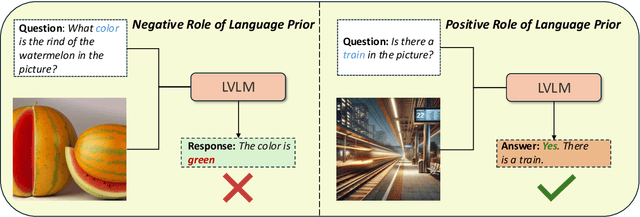
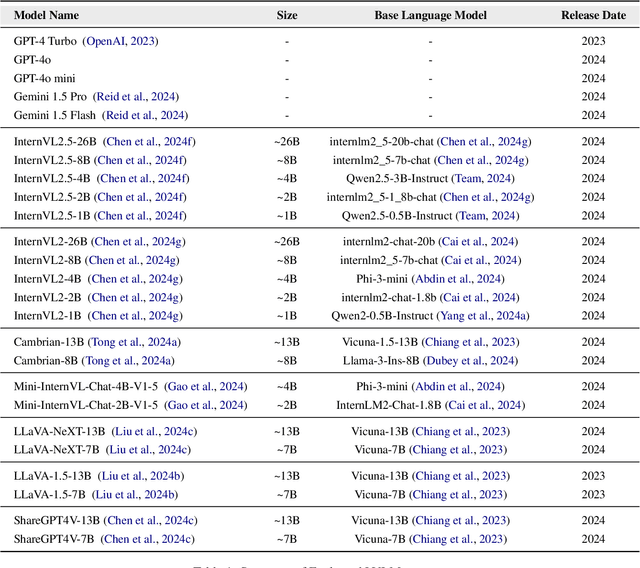
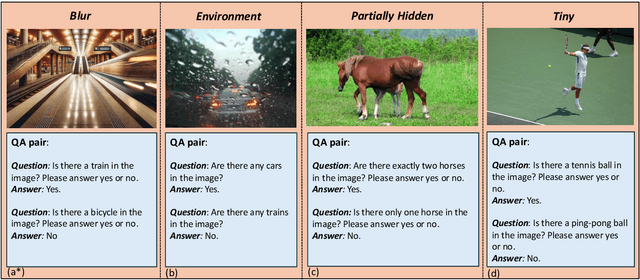
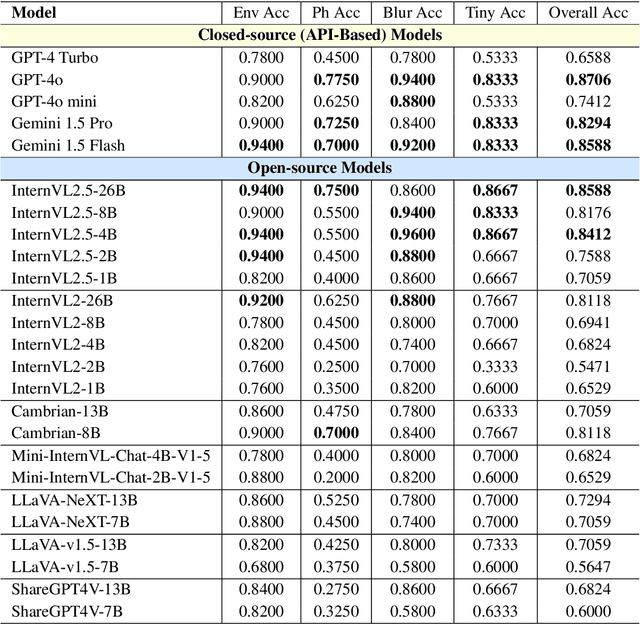
Abstract:Large Vision-Language Models (LVLMs) have shown impressive performance in various tasks. However, LVLMs suffer from hallucination, which hinders their adoption in the real world. Existing studies emphasized that the strong language priors of LVLMs can overpower visual information, causing hallucinations. However, the positive role of language priors is the key to a powerful LVLM. If the language priors are too weak, LVLMs will struggle to leverage rich parameter knowledge and instruction understanding abilities to complete tasks in challenging visual scenarios where visual information alone is insufficient. Therefore, we propose a benchmark called LanP to rethink the impact of Language Priors in LVLMs. It is designed to investigate how strong language priors are in current LVLMs. LanP consists of 170 images and 340 corresponding well-designed questions. Extensive experiments on 25 popular LVLMs reveal that many LVLMs' language priors are not strong enough to effectively aid question answering when objects are partially hidden. Many models, including GPT-4 Turbo, exhibit an accuracy below 0.5 in such a scenario.
Defending Multimodal Backdoored Models by Repulsive Visual Prompt Tuning
Dec 29, 2024



Abstract:Multimodal contrastive learning models (e.g., CLIP) can learn high-quality representations from large-scale image-text datasets, yet they exhibit significant vulnerabilities to backdoor attacks, raising serious safety concerns. In this paper, we disclose that CLIP's vulnerabilities primarily stem from its excessive encoding of class-irrelevant features, which can compromise the model's visual feature resistivity to input perturbations, making it more susceptible to capturing the trigger patterns inserted by backdoor attacks. Inspired by this finding, we propose Repulsive Visual Prompt Tuning (RVPT), a novel defense approach that employs specially designed deep visual prompt tuning and feature-repelling loss to eliminate excessive class-irrelevant features while simultaneously optimizing cross-entropy loss to maintain clean accuracy. Unlike existing multimodal backdoor defense methods that typically require the availability of poisoned data or involve fine-tuning the entire model, RVPT leverages few-shot downstream clean samples and only tunes a small number of parameters. Empirical results demonstrate that RVPT tunes only 0.27\% of the parameters relative to CLIP, yet it significantly outperforms state-of-the-art baselines, reducing the attack success rate from 67.53\% to 2.76\% against SoTA attacks and effectively generalizing its defensive capabilities across multiple datasets.
Tuning Vision-Language Models with Candidate Labels by Prompt Alignment
Jul 11, 2024



Abstract:Vision-language models (VLMs) can learn high-quality representations from a large-scale training dataset of image-text pairs. Prompt learning is a popular approach to fine-tuning VLM to adapt them to downstream tasks. Despite the satisfying performance, a major limitation of prompt learning is the demand for labelled data. In real-world scenarios, we may only obtain candidate labels (where the true label is included) instead of the true labels due to data privacy or sensitivity issues. In this paper, we provide the first study on prompt learning with candidate labels for VLMs. We empirically demonstrate that prompt learning is more advantageous than other fine-tuning methods, for handling candidate labels. Nonetheless, its performance drops when the label ambiguity increases. In order to improve its robustness, we propose a simple yet effective framework that better leverages the prior knowledge of VLMs to guide the learning process with candidate labels. Specifically, our framework disambiguates candidate labels by aligning the model output with the mixed class posterior jointly predicted by both the learnable and the handcrafted prompt. Besides, our framework can be equipped with various off-the-shelf training objectives for learning with candidate labels to further improve their performance. Extensive experiments demonstrate the effectiveness of our proposed framework.
Atrial Septal Defect Detection in Children Based on Ultrasound Video Using Multiple Instances Learning
Jun 06, 2023

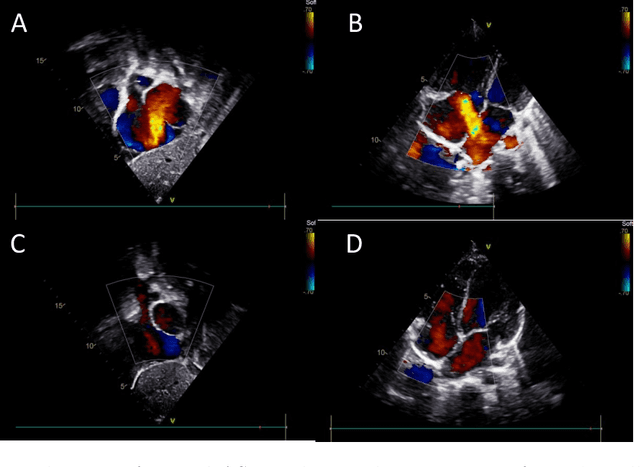

Abstract:Purpose: Congenital heart defect (CHD) is the most common birth defect. Thoracic echocardiography (TTE) can provide sufficient cardiac structure information, evaluate hemodynamics and cardiac function, and is an effective method for atrial septal defect (ASD) examination. This paper aims to study a deep learning method based on cardiac ultrasound video to assist in ASD diagnosis. Materials and methods: We select two standard views of the atrial septum (subAS) and low parasternal four-compartment view (LPS4C) as the two views to identify ASD. We enlist data from 300 children patients as part of a double-blind experiment for five-fold cross-validation to verify the performance of our model. In addition, data from 30 children patients (15 positives and 15 negatives) are collected for clinician testing and compared to our model test results (these 30 samples do not participate in model training). We propose an echocardiography video-based atrial septal defect diagnosis system. In our model, we present a block random selection, maximal agreement decision and frame sampling strategy for training and testing respectively, resNet18 and r3D networks are used to extract the frame features and aggregate them to build a rich video-level representation. Results: We validate our model using our private dataset by five-cross validation. For ASD detection, we achieve 89.33 AUC, 84.95 accuracy, 85.70 sensitivity, 81.51 specificity and 81.99 F1 score. Conclusion: The proposed model is multiple instances learning-based deep learning model for video atrial septal defect detection which effectively improves ASD detection accuracy when compared to the performances of previous networks and clinical doctors.
 Add to Chrome
Add to Chrome Add to Firefox
Add to Firefox Add to Edge
Add to Edge